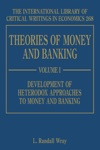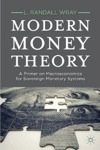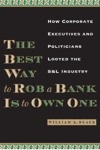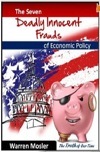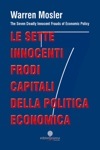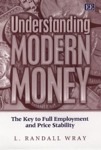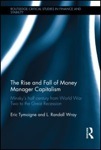By William K. Black
(Cross-posted from Benzinga)
An important but fundamentally flawed debate about Fannie and Freddie’s role in the ongoing crisis has raged since the SEC sued the former senior managers of both entities for securities fraud. The Wall Street Journal and Peter Wallison (in the WSJ) have claimed that the suit vindicates their positions and discredits the Federal Crisis Inquiry Commission (FCIC). Joe Nocera, in his New York Times column, has thundered at the SEC and then Wallison,accusing him of “The Big Lie.” Nocera’s column is also interesting because it (implicitly) argues that the thesis of Reckless Endangerment is incorrect. His colleague Gretchen Morgenson and Joshua Rosner co-authored that book. I write to provide yet another view, distinct from each of the sources.
There are two primary issues about Fannie and Freddie and the crisis discussed in the debate. First, why did Fannie and Freddie, relatively suddenly, change their business practices radically and begin purchasing large amounts of nonprime mortgages? Second, what role did declining mortgage credit quality that did not descend to the level of loans that the industry described as “subprime” play in the Fannie and Freddie crisis? The first issue is vastly more important and this article focuses on it. (The short answer to the second question is: “The first issue, for everyone except theSEC, comes down to this question: did Fannie and Freddie’s controlling officers(eventually) cause them to buy large amounts of nonprime loans for the same reason their counterparts running Lehman, Bear Stearns and Merrill Lynch did(the higher nominal short-term yield maximized their current compensation) or because “the government” made them buy the loans?) (Lehman, Bear Stearns, and Merrill Lynch were not subject to any governmental requirements to purchase any category of nonprime loans.)
I show that Fannie and Freddie’s controlling officers (eventually) caused them to buy huge amounts of nonprime loans for the higher short-term nominal yield (though they knew that the actual yield would be negative as soon as the housing bubble stalled). I exploit a “natural experiment” provided by liar’s loans – loans made without prudent underwriting of the borrower’s capacity to repay the loan. No governmental entity ever required any lender, or any purchaser of loans (and that includes Fannie and Freddie), to make liar’s loans. The mortgage industry’s anti-fraud experts, the FBI, and the banking regulators all warned about liar’s loans producing an epidemic of fraud. If Fannie and Freddie purchased large amounts of liar’s loans, then their controlling managers did so because liar’s loans’higher short-term nominal yield maximized their near-term compensation – not because “the government” made them do so.
OFHEO, which was Fannie and Freddie’s regulator during the relevant period, had ample regulatory authority to prevent Fannie and Freddie from purchasing liar’s loans and its head, James B. Lockhart, was a George Bush appointee and one of his oldest friends (from prep school). Lockhart had President Bush’s full support and he was in no way intimidated by Barney Frank or Chris Dodd. Lockhart shared Bush’s anti-regulatory mindset, his inability to envision elite business leaders as felons, and his strong support for even the most perverse executive compensation systems. Lockhart was not “captured” by Fannie and Freddie. He was not a supporter of either entity. He and his senior regulators that I met simply did not believe it was legitimate for the government to regulate compensation or, absent proof that the business practice had already produced large losses, Fannie and Freddie’s business strategy.
The, SEC complaint, takes the unique, naïve, and untenable position that Fannie and Freddie bought very large amounts of nonprime loans in order to increase market share. This position is exceptionally important because it reveals the SEC’s unwillingness to take on even the most perverse executive compensation systems that are driving our recurrent, intensifying financial crises. Suffice it to say that the documentary record at Fannie and Freddie is replete with evidence that the controlling officers drove the decision to adopt a new business plan of purchasing vast amounts of nonprime loans and that the reason for the plan was to increase short-term nominal yields. Their risk people repeatedly warned them that the new plan could be disastrous. High short-term yield produced extraordinary near-term compensation for Fannie and Freddie’s controlling officers,so it is no surprise that the CEOs’ decided in favor of the path that made them wealthy – and produced disaster for Fannie, Freddie, and the government.
Perverse Executive Compensation Systems are Criminogenic
Each of the discussions (and that includes the SEC complaints) is faulty because it proceeds as if Fannie and Freddie suddenly began engaging in accounting and securities fraud late in the crisis. That is objectively false. The SEC (and eventually Fannie and Freddie’s regulator – then OFHEO, now called FHFA) documented that Fannie and Freddie had long engaged in accounting and securities fraud – no later than the beginning of the decade that would eventually produce the crisis. The SEC detected Freddie’s and then Fannie’sfrauds in 1983. Indeed, the SEC explicitly charged that Fannie’s senior managers caused it to commit accounting fraud for the purpose of maximizing their executive compensation. I was an expert witness for OFHEO against Raines, et al. in the agency’s enforcement action arising from this earlier fraud. The SEC and OFHEO’s actions led to Freddie appointing a new CEO in December 2003 (Richard Syron, the most senior defendant in the new SEC suit arising from Freddie’s operations) and Fannie appointing a new CEO in December 2004 (Mr. Mudd, Fannie’s COO during its endemic accounting fraud from 2000-20003). Mudd is the most senior defendant in the SEC suit arising from Fannie’s operations.
One of the delightful acts of unintentional self-parody arising from the crisis is that when the Business Roundtable (the 100 largest U.S. corporations), eventually decided that they needed a spokesperson to respond to the Enron-era epidemic of “accounting control fraud,” they selected Frank Raines (Fannie’s CEO). BusinessWeek dutifully asked Raines why the fraud epidemic occurred. Raines responded:
“Don’t just say: ‘If you hit this revenue number, your bonus is going to be this.’ It sets up an incentive that’s overwhelming. You wave enough money in front of people, and good people will do bad things.”
Raines knew of what he spoke, for his predecessors and he had devised such a bonus system (tied largely to, non-GAAP, earnings per share (EPS) targets purportedly designed to be “stretch” goals). Fannie’s compensation system produced exactly the perverse results that Raines predicted and explained to Business Week.
“By now every one of you must have 6.46 [EPS] branded in your brains. You must be able to say it in your sleep, you must be able to recite it forwards and backwards, you must have a raging fire in your belly that burns away all doubts, you must live, breath and dream 6.46,you must be obsessed on 6.46…. Afterall, thanks to Frank, we all have a lot of money riding on it…. We must do this with a fiery determination,not on some days, not on most days but day in and day out, give it your best,not 50%, not 75%, not 100%, but 150%.”
“Remember, Frank has given us an opportunity to earn not just our salaries, benefits, raises,ESPP, but substantially over and above if we make 6.46. So it is our moral obligation to givewell above our 100% and if we do this, we would have made tangible contributions to Frank’s goals.” (Mr.Rajappa, head of Fannie’s internal audit, emphasis in original.)
I call internal audit the anti-canary. Miners took canaries into coal mines because the birds are more susceptible than humans to carbon dioxide and monoxide. If the canary loses consciousness the humans can survive by exiting the mine. Internal audit is supposed to the least susceptible unit in a firm. The mantra of internal audit is“independence” from the senior managers. If internal audit is suborned by executive compensation then the rot is pervasive in other units. In considering the import of Rajappa’s speech to his internal audit troops, consider the fact that it was a written speech and that Rajappa provided the text to Raines – and got favorable suggestions to make it even stronger. Raines knew and approved of the fact that the rot at Fannie was pervasive.
Ireland Imports U.S. Executive Compensation and Produces a Similar Crisis
A word about “stretch goals.” Consider this exceptionally naïve passage from a Nordic banker (Nyberg) recently asked to write a report on the failed Irish banks. He is discussing earning targets that maximized executive compensation.
“Targets that were intended to be demanding through the pursuit of sound policies and prudent spread of risk were easily achieved through volume lending to the property sector.” (Nyberg 2011: 30)
The bonus targets, of course, were not “intended to be demanding through the pursuit of sound policies.” The senior managers chose stretch goals,impossible to reach through prudent lending, because such goals were “easily achieved” by ignoring asset quality (which they proceeded to do). As George Akerlof and Paul Romer aptly observed in their 1993 article (“Looting: the Economic Underworld of Bankruptcy for Profit”), accounting control fraud is a “sure thing.” Whether one is in Ireland or the U.S., the fraud recipe for a lender (or loan purchaser) has four ingredients.
- Grow like crazy
- By making (or buying) exceptionally bad loans at a premium yield, while
- Employing extreme leverage, and
- Providing grossly inadequate allowances for loan and lease losses (ALLL)
Indeed, Ireland provides a superb natural experiment that helps us determine why banks make or purchase exceptionally bad loans with grossly deficient underwriting and trivial ALLL. The fraud recipe is so perverse because it is mathematically guaranteed to produce record (albeit fictional) short-term reported income, huge compensation, and catastrophic losses. If a material number of banks (or a small number of very large banks) follows the same fraud recipe in an asset category it will hyper-inflate a bubble in that asset. Accounting control frauds often lend into teeth of a glut.
Ireland is so useful because it had no equivalent ofa Community Reinvestment Act (CRA) and no material secondary market (noe quivalent of Fannie and Freddie – hence, no requirements to purchase a subset of below median-income home mortgages). Nevertheless, its real estate bubble was roughly twice as large (in relative terms) as the U.S. bubble and it had twin bubbles in commercial and residential real estate. Its banks exhibited a collapse of loan quality driven by perverse executive compensation. Irish bank CEOs followed the same fraud recipe as Lehman, Merrill Lynch, Countrywide, WaMu, Fannie,Freddie and their ilk and produced the same catastrophic losses.
“All of the covered [failed]banks regularly and materially deviated from their formal policies in order to facilitate rapid and significant property lending growth. In some banks, credit policies were revised to accommodate exceptions, to be followed by further exceptions to this new policy, thereby continuing the cycle.”
“Occasionally,management and boards clearly mandated changes to credit criteria. However, in most banks, changes just steadily evolved to enable earnings growth targets to be met by increased lending.” (Nyberg 2011: 34)
“The associated risks appeared relevant to management and boards only to the extent that growth targets were not seriously compromised.” (Nyberg 2011: 49)
That’s right; let nothing get in the way of making it simple to meet the bonus target – even though doing so will destroy the bank.
Fannie and Freddie’s CEOs Led them in Serial Accounting and Securities Fraud
Fannie and Freddie’s accounting frauds in the earlier part of the decade, however, followed a different recipe. Their managers’ were then “skimmers” instead of “looters.” We should not be too kind to them. Their earlier accounting fraud recipe put Fannie and Freddie (and therefore the government) at risk of loss and their phony (“dynamic”) hedging posed a systemic risk. Fannie and Freddie’s original fraud scheme sought to maximize the senior managers’ income by taking substantial interest rate risk. This required Fannie and Freddie to grow their portfolios massively.
“[F]rom 1998 to 2003,Freddie Mac’s retained portfolio grew at an annual average rate of about 21 percent. Over the same period of time, Fannie Mae’s mortgage holdings increased by an annual average rate of 17 percent. By 2003, Freddie Mac’s retained portfolio ($661 billion) was about 72 percent as large as Fannie Mae’s ($920billion.)”
The Rise and Fall of Fannie Mae and Freddie Mac: Lessons Learned and Options for Reform. Richard K. Green and Ann B. Schnare (November 19, 2009: p. 18).
Fannie and Freddie’s controlling officers made the opposite bet on the direction of interest rates. Fannie lost its bet, so it hid it losses by calling them “hedges.” This accounting fraud turned Fannie’s real losses into fake profits, maximizing the officers’bonuses. This bit of accounting and securities fraud caused the SEC to required Fannie to restate its financial statements and recognize millions of dollars in losses. Naturally, Fannie’s officers did not give back their bonuses. Freddie won its beton interest rates and, after recognizing enough income to maximize current executive bonuses, it created “cookie jar” loss reserves so that it could draw on them if it failed to meet the targets that maximized future bonuses. The SEC was not amused and required Freddie to restate its financial statements.
Here is the crazy thing – the SEC, OFHEO, and Department of Justice all failed to demand that Fannie and Freddie end their perverse executive compensation system that made the executives wealthy through fraud and put the entities and the government at risk. The Bush White House took no action and made no criticism of the compensation system. The Congress (both parties) made no criticism of the compensation systems. Remember, we had seen these perverse compensation systems blow up the S&L industry and the Enron-era accounting control frauds.
OFHEO even allowed Mr. Mudd, Fannie’s COO during the period of its extensive accounting and securities fraud, to replace Raines’ as CEO in December 2004. None of this was due to any weakness in OFHEO’s regulatory powers. The problem was an unwillingness to regulate. The unwillingness was ideological. OFHEO’s senior managers did not consider it legitimate to regulate executive compensation or to block Fannie’s choice of its new CEO. The new SEC suit names Mudd as a defendant.
OFHEO had its maximum leverage over Fannie and Freddie when the SEC discovered their accounting and securities frauds and its own examinations confirmed those frauds in the middle of the critical decade. OFHEO used its leverage to fight the last war – ensuring that Fannie and Freddie did not take excessive interest rate risk. It sharply limited the amount that Fannie and Freddie could grow their portfolios and cracked down on hedging abuses. Unfortunately, the first of these actions, while completely appropriate, helps explain the new accounting and securities fraud that are (or should be in a better complaint and prosecution) the subject of the new SEC action.
Fannie and Freddie’s New Controlling Insiders become Looters
By December 2004, the SEC and OFHEO had forced out Fannie and Freddie’s controlling managers who led the accounting control frauds in the first part of the decade, but they left in place Fannie and Freddie’s exceptionally perverse executive compensation systems that promised that the new senior officers could attain vast wealth if they could cause Fannie and Freddie to report high, short-term profits. Their old scam, interest rate risk plus hedge/cookie jar accounting fraud could no longer be used when Fannie and Freddie’s new controlling officers took power. There was only one alternative means of creating (fictional) outsized reported profits. They could not grow their portfolio significantly, but OFHEO failed to require them to divest those portfolios –and those portfolios were massive because of the earlier fraud scheme.
In 2005, Fannie and Freddie’s new controlling officers led them into an orgy of purchasing nonprime loans (liar’s loans, subprime loans, and subprime liar’s loans) – the loans sure to generate the largest short-term nominal yield. This had the intended effect on the controlling officers’ executive compensation. Fannie and Freddie’s controlling officers increasingly moved prime loans out of portfolio by securitizing and selling them. Their portfolios increasingly became littered with nonprime loans. Fannie and Freddie’s controlling officers followed the classic recipe for looters using accounting control fraud. The difference between Fannie and Freddie and some of its counterparts is that Fannie and Freddie’s risk and (some) underwriting officers mounted considerably greater opposition to the fraud recipe than many other accounting control frauds. This explains why Fannie and Freddie’s losses (relative to the amount of nonprime loans they purchased) were smaller than many of their counterparts.
It is only by taking into account Fannie and Freddie’s earlier accounting fraud and the SEC and OFHEO’s reactions to those frauds that one can understand why Fannie and Freddie made radical changes in their purchase of nonprime loans in 2005. It is only by taking into account the (moderately) superior professional culture of its risk professionals that one can understand why their losses were not far worse (given the enormous amounts of nonprime loans they purchased from 2005-2007). Wallison implicitly assumes that if Fannie and Freddie had not purchased these nonprime loans their competitors would not have done so. That assumption is extraordinary and requires heavy proof. Wallison provides none. It was Fannie and Freddie’s competitors who purchased the same nonprime loans so eagerly in 1998-2004 that they eviscerated Fannie and Freddie’s once dominant market share in the secondary market for mortgage loans. Fannie and Freddie’s combined share of the secondary market fell from well over 90% in 1990 to under one-half by 2004. Indeed, many of Fannie and Freddie’s losses come from investing in or guaranteeing the financial derivatives issued by its competitors where the underlying asset was nonprime assets, particularly liar’s loans and subprime liar’s loans.
“Private label securities accounted for 56 percent of Fannie Mae’s total mortgage-related security purchases from 2004 through 2006, and 54 percent for Freddie Mac. (See Exhibit 4.) Most of these purchases involved securities backed by subprime or Alt-A mortgages. (See Exhibit 9.) In 2006, the GSEs’ purchases of such securities represented 9.8 percent of the total volume of subprime and Alt-A originations made within the year.” (Green & Shnare 2009: 23)
“Alt-A” is one of the many euphemisms for liar’s loans. The term is a double lie. It purports that the loans are prime quality (“A” grade) and it purports that the loans are underwritten through “alternative” means. In reality, the capacity of the borrower to repay the loan was not underwritten. Typically, the lenders and their agents fraudulently inflated the borrower’s income.
Fannieand Freddie were Late to Purchasing Huge Amounts of Nonprime Paper
Fannie (which predated Freddie), created the concept and standard of the “prime” home loan decades ago when it was an independent government agency before it was privatized. When it was a government agency, it was the principal source of desirable market discipline ensuring high mortgage quality. Nonprime home loans include three primary categories – liar’s loans (loans made without prudent underwriting of the borrower’s capacity to repay the loan), subprime (loans made to borrowers with known, serious credit defects), and subprime liar’s loans (combining both problems). One of the easy tests of competence is to find whether a writer knows so little that he believes that subprime and liar’s loans are dichotomous. Credit Suisse reports that, by 2006, 49% of the loans called “subprime” were also liar’s loans.
Prior to 2005, nonprime loans were sold overwhelmingly to large investment banks. These banks were not subject to any governmental requirements to purchase such loans. The investment banks purchased the nonprime loans because doing so maximized their controlling officers’ compensation. Fannie and Freddie lost enormous market share because of this competition.
Wallison’s Thesis has been Repeatedly Falsified
The indisputable fact that it was the non-regulated sector (mortgage banks, mortgage brokers, investment banks, and non-bank affiliates that led the epidemic making and purchasing fraudulent nonprime loans has not prevented multiple, major analytical failures about the role that Fannie and Freddie played in the crisis. The historical quibble is that Fannie and Freddie reduced their loan purchase standards well before 2005. That is true, but it does not explain why Fannie and Freddie suffered huge losses on nonprime loans. Fannie and Freddie’s definition of “prime” created an exceptionally safe standard in which credit losses were minimal. It was possible to reduce that standard without creating a criminogenic environment and the data review by FCIC demonstrates that the loans that Wallison has lumped together (relying on Pinto’s work) and labeled “subprime” are extremely disparate.
Fannie’s original definition of “prime” was equivalent to an A+. The loans that themortgage industry called “subprime” were a C-. Liar’s loans were a D-. Subprime liar’s loans were an F. There is a large range in credit quality between the original definition of prime and loans the industry called “subprime.” FCIC showed that the loans that Pinto (but not the industry) classified as “subprime” had dramatically lower default rates than the loans that the industry classified as subprime. As Charles Calomiris, one of Fannie and Freddie’s most virulent critics has emphasized, the proof as to who is correct in this argument about categorization rests on the performance of the loans. The loans at Fannie and Freddie that Pinto (but not the industry) termed subprime performed far better than the loans the industry termed subprime.
Nocera’s December 23, 2011 column calls Pinto and Wallison’s work a “big lie” because it categorizes loans that Fannie and Freddie would not have considered “prime” (circa 1982) as “subprime” even when these loans were not considered “subprime” by the industry (circa 2006).
This is unduly harsh. Pinto and Wallison (and Joshua Rosner and Gretchen Morgenson) are correct that the credit quality of some loans considered prime deteriorated for over a decade. The real problem is the authors’ lack of consistency. At root, their point is that differences matter. Specifically, they argue that making nonprime loans is far riskier than making prime loans. The same logic, however, requires them to evaluate whether differences matter withinthe vast category that they created and labeled as “subprime.” They failed to conduct this evaluation. The FCIC conducted one aspect of the evaluation and found that the differences within the Pinto/Wallison category had enormous consequences for relative performance. The bulk of Fannie and Freddie’s loans that fall within Pinto/Wallison’s unique and far broader categorization of “subprime” loans perform far better (have much lower default rates) than the narrower, commonly used categorization of subprime.
Second, all the authors advancing this meme failed to evaluate the difference between liar’s loans and non-liar’s loans for the purpose of their real thesis – “the government” caused the crisis by forcing Fannie and Freddie to purchase bad loans. This argument has many factual weaknesses, but one fatal weakness is the fact that there was never any governmental requirement for Fannie and Freddie to purchase liar’s loans. This provides a natural experiment that allows us to test, and reject, the thesis that Fannie and Freddie purchased bad loans because of governmental mandates. The CEOs of Fannie and Freddie caused them to buy vast amounts of liar’s loans because the higher nominal yield maximized near-term executive compensation. The CEOs of Fannie and Freddie acted like the CEOs of Bear Stearns, Lehman, and Merrill Lynch and they did so for the same reasons and with the same fatal consequences. Akerlof and Romer captured the dynamic in the title of their article (“Looting: the Economic Underworld of Bankruptcy for Profit”). The firm fails, but the CEO walks away wealthy because accounting control fraud is a “sure thing.”
Remember, the FBI has already warned (in September2004) and the mortgage industry’s own anti-fraud unit (MARI) has warned in early 2006, respectively, that an “epidemic” of mortgage fraud will produce a financial “crisis” if it is not stopped and that liar’s loans are 90% fraudulent. No honest, financially sophisticated entity would make or purchase liar’s loans (or CDOs backed by liar’s loans) knowing these facts. Yet, several of the leading investment banks, hundreds of mortgage bankers, WaMu, Countrywide, IndyMac, and Fannie and Freddie rushed to make or purchase endemically fraudulent mortgage paper. This would be irrational for any honest CEO, but it would be optimal for a CEO directing an accounting control fraud. Fannie and Freddie’s losses on liar’s loans paper are extreme – and note that the authors of the study make the common error of assuming that liar’s loans and subprime loans are dichotomous. If one examined separately the losses on Fannie and Freddie’s subprime liar’s loans (and CDOs where such loans were the bulk of the underlying) the losses would be catastrophic.
“In 2008, for example,Alt-A mortgages represented just 9.7 percent of Fannie Mae’s book, but accounted for almost 40 percent of the company’s credit losses. The experience at Freddie Mac tells a similar story: the serious delinquency rate on FreddieMac’s Alt-A book (which is 8 percent of the portfolio) is more than three times higher than the total portfolio’s rate.” (Green & Schnare 2009: 24).
Sadly, the SEC fails to exploit this natural experiment involving liar’s loans. Indeed, the SEC complaint appears to have been drafted by someone so poorly informed that he believes that liar’s loans and subprime loans are dichotomous categories. Nocera is also critical of the SEC complaint, but his criticism arises from his erroneous belief that the complaint rests on Pinto and Wallison’s unique categorization of “subprime” loans. Nocera is guilty of what he accuses Pinto and Wallison of doing, writing “I still maintain that the S.E.C.’s charges are weak, and that the agency brought the case in part for political reasons: how better to curry favor with House Republicans than to go after former Fannie and Freddie executives?” This is a strong charge requiring at least some proof, but Nocera provides no support.
Nocera (and Wallison) miss entirely the key aspect of the SEC complaint that refutes Wallison’s thesis that Fannie and Freddie bought bad loans because “the government” made them buy bad loans. Wallison’s facially implausible claim is that Fannie and Freddie were weak political actors forced by crazed Democrats to purchase suicidal loans in order to subsidize poorer minorities that support Democrats. Fannie and Freddie were exceptionally powerful political entities with strong support from both parties, e.g., Newt Gingrich, but ignore this aspect of unreality solely for the purpose of testing the internal logic of Wallison’s hypothesis. Wallison’s claim is that Fannie and Freddie were so weak politically that they were forced to take on suicidal loans in order to curry political favor with the Democrats. If that were true, then Fannie and Freddie should have consistently been leading the purchase of subprime loans from 1993 on (which was when HOEPA became law). In reality, Fannie and Freddie lost tremendous market share because they (generally) refused to purchase loans the industry categorized as subprime until roughly 2005. Their rivals, the investment banks (who were not subject to any affordable housing mandates), rushed to purchase massive amounts of these subprime loans. That is the conventional (compelling) reason to reject Wallison’s thesis. I have added another reason – Fannie and Freddie would never have purchased liar’s loans under Wallison’s thesis because “the government” never compelled them to purchase liar’s loans and doing so would be suicidal.
The SEC complaint adds an additional reason why Wallison’s thesis fails. Under Wallison’s thesis Fannie and Freddie should have been exaggerating the amount of subprime loans they were making in order to curry favor with the despicable Democrats. But the SEC complaint (and Wallison and Pinto’s own work) prove that Fannie and Freddie did the opposite. Fannie and Freddie’s controlling managers consistently cooked their financial statements and financial disclosures to make it appear that Fannie and Freddie purchased vastly fewer subprime loans than they actually purchased. (They did the samething with their liar’s loans – for the same reasons.) Nocera (incorrectly) assumes that the SEC complaint relies on Pinto/Wallison’s unique, ultra-broad categorization of “subprime” loans, but Fannie and Freddie’s documents show that they understated both the number of liar’s loans and subprime loans they purchased (as categorized by conventional industry norms). This makes perfect sense for managers running an accounting control fraud, but it makes no sense under Wallison’s thesis.
We need to be blunt about the source of Wallison’s thesis. Wallison is one of the leading architects of the global financial crisis in his capacity as AEI’s long-time co-director of their financial deregulation program. He pushed the criminogenic three “de’s”: deregulation, desupervision, and de facto decriminalization. He criticized Fannie and Freddie for notmaking greater amounts of nonprime loans. He is desperately seeking to escape accountability for his major role in creating a global crisis. He is an ideologue who would have been fired by AEI had he supported financial re-regulation. His thesis that the crisis was really caused by the government forcing the politically powerless Fannie and Freddie to make suicidal loans is a desperate effort to save himself and his ideology.
Wallison’s thesis cannot survive the laughtest. It requires that, for over a decade in which the Republicans had control over the Congress and/or the White House Fannie and Freddie’s CEOs knew they were purchasing loans that would eventually prove catastrophic for Fannie and Freddie, the lenders (loan sales to Fannie and Freddie are made with recourse back to the seller), and for the (poorer minorities) purchasing the homes. No one at Fannie and Freddie leaks this to the Republican Congress or the Bush White House even though such leaks would have (under Wallison’s thesis) provided the mother of all Democrat-bashing congressional hearings. No one at OFHEO, including Bush’s old friend, and strong Republican, James Lockhart (the guy running OFHEO), informs Bush that Fannie and Freddie are headed for catastrophe because the Democrats have forced them to purchase suicidal loans to poorer minorities (i.e., the base of the Democratic Party).
The thesis also requires that, knowing of the coming catastrophe, Fannie and Freddie’s controlling officers, for over 15 years, decided to provide only trivial accounting allowances for the inevitable catastrophic losses – even though GAAP would mandate that they provide massive allowances in such circumstances and even though the controlling officers’ failure to do so could be prosecuted as securities fraud. The failure to provide massive allowances makes no sense under the Wallison thesis, but it is the standard “fourth ingredient” for an accounting control fraud. Had Fannie and Freddie’s controlling officers appropriate allowances for losses their financial reports would have shown the truth – that the actual long-term yield on liar’s loans was negative. Fannie and Freddie would have reported substantial losses from 2005 on had they established the allowances required by GAAP, which would have eliminated their bonuses.
Wallison is the Problem and Placing him on FCIC was Scandalous
The Wall Street Journal editorial on the SEC complaints against Fannie and Freddie claims that FCIC should be embarrassed that it ignored the key role that Fannie and Freddie played in the crisis. Wallison has a new piece in The Atlantic in which he claims “the government” caused the crisis.
If one had to pick one person in the private sector most responsible for causing the global financial crisis it would be Wallison. As I explained, he is the person, who with the aid of industry funding, who has pushed the longest and the hardest for the three “de’s.” It was the three “de’s” combined with modern executive and professional compensation that created the intensely criminogenic environments that have caused our recurrent, intensifying crises. He complained during the build-up to the crisis that Fannie and Freddie weren’t purchasing more affordable housing loans. He now claims that it was Fannie and Freddie’s purchase of affordable housing loans that caused the crisis. He ignores the massive accounting control fraud epidemics and resulting crises that his policies generate. Upon reading that Fannie and Freddie’s controlling officers purchased the loans as part of a fraud, he asserts that the suit (which refutes his claims) proves his claims.
Placing Wallison on FCIC was like placing the Don’s consigliere on a panel that is supposed to investigate the mafia. What was Wallison going to say as a FCIC member? “Mea Culpa, I’ve been wrong for a quarter-century about everything important and I have come to admit that deregulation, desupervision, and de factodecriminalization are disastrous.” There was a reason no other Republican appointee to FCIC was willing to sign on to Wallison’s dissent. His dissent is a screed that is devoted to protecting his theoclassical economic ideology. FCIC did not ignore Pinto’s work, it refuted its analytics. Wallison’s real complaint is that FCIC took Pinto’s work seriously enough to do the analytical work that Pinto and Wallison should have done to determine whether Pinto’s unique categorization of “subprime” produced a category of loans with similar (terrible) performance results. What Wallison cannot forgive the FCIC staff and other commissioners for is that they did treat his claims seriously despite his obvious self-interest and the logical inconsistency of his claims. It was taking his claims seriously and evaluating his data that he failed to evaluate that put the final nail in the coffin of his claims. Wallison and Pinto have had a year to point out any data errors in FCIC’s demonstration that the loans Pinto categorized as “subprime” had greatly superior loan performance compared to loans the industry categorized as “subprime.”
There is no point criticizing the Wall Street Journal’s editorial staff. They know that FCIC concluded that Fannie and Freddie played a major role in the crisis. FCIC was correct that Fannie and Freddie were late to the party in terms of purchasing the loans and CDOs that eventually caused the catastrophic losses. The question was why Fannie and Freddie suddenly began to buy enormous amounts of largely fraudulent nonprime paper in 2005. They did so, as the repeated investigations have found, for the same reason that Fannie and Freddie engaged in accounting control fraud earlier in the decade – it makes the controlling officers wealthy. It is a “sure thing.” What I have added is the relevant time line explaining the role that Fannie and Freddie’s earlier accounting control frauds, and the modest sanctions levied by the SEC and OFHEO, played in explaining why they went so heavily into fraudulent nonprime paper around 2005.
Wallison has been conspicuously silent in demanding that elite CEO frauds that drove this crisis be prosecuted. I ask him, and I ask reporters who discuss any story with him, whether he will now demand that we end the de facto decriminalization of the fraudulent CEOs who drive our financial crises and become wealthy through their frauds. Does Wallison believe that Fannie and Freddie’s controlling officers would be a good place to begin prosecuting?
Bill Black is the author of The Best Way to Rob a Bank is to Own One and an associate professor of economics and law at the University of Missouri-Kansas City. He spent years working on regulatory policy and fraud prevention as Executive Director of the Institute for Fraud Prevention, Litigation Director of the Federal Home Loan Bank Board and Deputy Director of the National Commission on Financial Institution Reform, Recovery and Enforcement, among other positions.
Bill writes a column for Benzinga every Monday. His other academic articles, congressional testimony, and musings about the financial crisis can be found at his Social Science Research Network author page and at the blog New Economic Perspectives.
Follow him on Twitter: @WilliamKBlack


